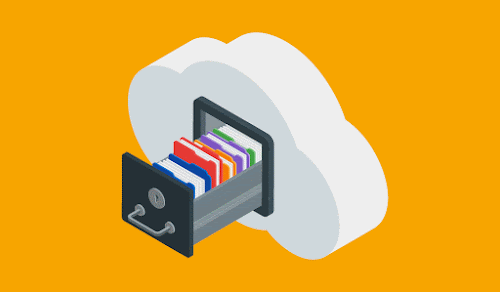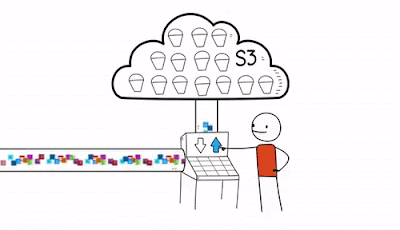Cloud Storage
Introduction
During this pandemic, We almost depend on the available technologies. In that way when it comes to storage we are moving towards cloud storage, which helps to access the files anywhere at any time. It’s really helpful, right? But one thing is internet connectivity is required to access cloud storage. Here are the all details about this wonderful helpful storage technology.
What is cloud storage? Where does an image or video is being saved on the internet? What are the advantages and disadvantages of cloud storage? These are some random questions, which everyone has about cloud storage. I hope this blog will helpful for you guys to understand better about Cloud storage.
For many organizations, cloud storage arrangements have come to supplant conventional on-premise stockpiling equipment. Rather than putting away documents and organizers on a solitary server, distributed storage disseminates information across another person’s framework (server farm, server, hard drive, and so forth.)
What is Cloud Storage?
Cloud storage is a model of PC information storage in which the advanced information is put away in legitimate pools. The physical storage traverses different servers (in some cases in numerous areas), and the physical condition is ordinarily possessed and overseen by a facilitating organization. These distributed storage suppliers are liable for keeping the information accessible and available, and the physical condition secured and running.
Individuals and associations purchase or lease storage capacity from the suppliers to store client, association, or application information.
Cloud storage service might be gotten through a colocated cloud computing service, a web service application programming interface (API), or by applications that use the API, for example, cloud desktop storage, a cloud storage gateway, or Web-based substance the board frameworks.
How Does Cloud Storage Work?
Cloud storage includes at any rate one information server that a client interfaces with using the web. The client sends documents physically or in a mechanized manner over the Internet to the information server which advances the data to various servers. The put-away information is then available through an online interface.
Cloud storage frameworks include huge quantities of information servers to guarantee their accessibility. That way, on the off chance that one server requires support or falls flat, the client can have confidence that the information has been imitated somewhere else to guarantee accessibility.
While the information in an open cloud is repeated in various physical areas for adaptation to non-critical failure and debacle recuperation purposes, the essential or neighborhood area will, in general, be closer genuinely to the organization’s office utilizing it so the information can be prepared quickly and at lower costs at that point, say picking an essential area most of the way around the world.
What about the Pros and Cons?
Advantages
1. Cost: Purchasing physical stockpiling can be costly. Without the requirement for equipment distributed storage is especially less expensive per GB than utilizing outer drives.
2.Accessibility: Utilizing the cloud for capacity gives you access to your documents from any place that has a web association.
3.Recovery: In case of a hard drive disappointment or another equipment breakdown, you can get to your documents on the cloud. It goes about as a reinforcement answer for your neighborhood stockpiling on physical drives.
4.Syncing and Updating: At the point when you are working with distributed storage, each time you make changes to a document it will be matched up and refreshed over the entirety of your gadgets that you get to the cloud from.
5. Security: Distributed storage suppliers add extra layers of security to their administrations. Since there are numerous individuals with records put away on the cloud, these suppliers go to added lengths to ensure your documents don’t get got to by somebody who shouldn’t.
Disadvantages
1.Internet Connection: Cloud put-together capacity is reliant on having a web association. On the off chance that you are on a moderate system, you may have issues getting to your capacity. On the occasion you get yourself someplace without the web, you won’t have the option to get to your records.
2.Costs: There are extra expenses for transferring and downloading documents from the cloud. These can rapidly include on the off chance that you are attempting to get to loads of records frequently.
3.Hard Drives: Distributed storage should dispose of our reliance on hard drives, right? Well, some business distributed storage suppliers require physical hard drives also.
4.Support: Backing for distributed storage isn’t the best, particularly on the off chance that you are utilizing a free form of a cloud supplier. Numerous suppliers allude you to an information base or FAQs.
5.Privacy: At the point when you utilize a cloud supplier, your information is no longer on your physical stockpiling. So who is answerable for ensuring that information is secure? That is an ill-defined situation that is as yet being made sense of.
Best cloud storage services in 2020
Conclusion
Okay, it’s a new era of storage technology but what if we took the storage technology to the next level? That is storing the brain’s information. Think about it and let us keep it for another.


